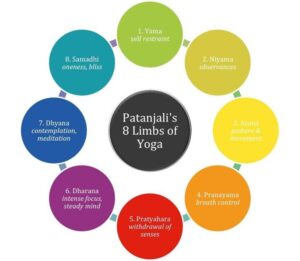Yoga, an ancient practice with roots in India, has evolved over thousands of years to become a comprehensive system for physical, mental, and spiritual well-being. While many people are familiar with yoga’s physical benefits, its spiritual benefits are equally profound and transformative. This blog explores the spiritual dimensions of yoga, divided into four key sections: Yoga Philosophy, Chakras and Yoga, Kundalini Energy, and Yoga Meditation.
Yoga Philosophy
The foundation of yoga lies in its rich philosophical framework, which goes beyond physical postures to embrace a holistic approach to life. At the core of yoga philosophy are the Yoga Sutras of Patanjali, a classical text that outlines the eight limbs of yoga, known as Ashtanga Yoga.

- Yama and Niyama: The ethical guidelines (Yama) and personal observances (Niyama) provide the moral foundation for a yogic lifestyle, emphasizing non-violence, truthfulness, self-discipline, and contentment.
- Asana and Pranayama: Physical postures (Asana) and breath control (Pranayama) prepare the body and mind for deeper spiritual practices.
- Pratyahara, Dharana, Dhyana, and Samadhi: These limbs guide the practitioner from sensory withdrawal (Pratyahara) to concentration (Dharana), meditation (Dhyana), and ultimately, spiritual enlightenment (Samadhi).
Yoga philosophy teaches that by harmonizing body, mind, and spirit, individuals can achieve a state of inner peace and self-realization, transcending the limitations of the ego and connecting with the universal consciousness.
Read more about it here : Understanding Patanjali’s 8 Limbs of Yoga: A Guide to Yoga Philosophy
Chakras and Yoga
Central to the spiritual aspect of yoga is the concept of chakras, which are energy centers located along the spine. Each chakra is associated with different physical, emotional, and spiritual functions.
- Root Chakra (Muladhara): Located at the base of the spine, it represents grounding and stability.
- Sacral Chakra (Svadhisthana): Situated below the navel, it governs creativity and sexual energy.
- Solar Plexus Chakra (Manipura): Located in the abdomen, it is linked to personal power and self-esteem.
- Heart Chakra (Anahata): Found in the chest, it is the center of love and compassion.
- Throat Chakra (Vishuddha): Positioned at the throat, it regulates communication and self-expression.
- Third Eye Chakra (Ajna): Located between the eyebrows, it is the seat of intuition and insight.
- Crown Chakra (Sahasrara): Situated at the top of the head, it connects to higher consciousness and spiritual enlightenment.
Yoga practices, such as specific postures (asanas), breathwork (pranayama), and meditation, can help balance and activate these chakras, promoting overall well-being and spiritual growth.
Kundalini Energy
Kundalini energy is often described as a dormant spiritual energy located at the base of the spine. When awakened through yoga and meditation, this energy rises through the chakras, leading to profound spiritual experiences and heightened states of consciousness.
- Kundalini Yoga: This form of yoga combines dynamic breathing techniques, postures, and chanting to awaken and channel the Kundalini energy.
- Awakening the Kundalini: The process involves removing energy blockages within the chakras, allowing the Kundalini to rise and flow freely. This can result in increased vitality, spiritual insights, and a sense of unity with the divine.
- Benefits of Kundalini Activation: Awakening the Kundalini can lead to a deep sense of inner peace, heightened intuition, and a greater connection to the universal consciousness. It is considered a path to spiritual enlightenment and self-realization.
Yoga Meditation
Meditation is a fundamental aspect of yoga that facilitates spiritual growth and inner transformation. Through meditation, practitioners can quiet the mind, connect with their inner self, and experience profound spiritual benefits.
- Mindfulness Meditation: This form of meditation involves observing thoughts and sensations without judgment, fostering a state of present-moment awareness.
- Mantra Meditation: Repeating a sacred word or phrase (mantra) helps focus the mind and cultivate spiritual awareness.
- Guided Meditation: Listening to a guided meditation can help deepen relaxation and facilitate spiritual exploration.
- Transcendental Meditation: This technique involves silently repeating a mantra to transcend ordinary thought and experience a state of pure awareness.
Meditation in yoga helps to dissolve the ego, reduce mental chatter, and create a deep sense of inner peace. It allows practitioners to connect with their higher self and experience a state of unity with the universe.
Conclusion
Yoga is much more than a physical practice; it is a profound spiritual journey that can lead to self-realization and enlightenment. By understanding and embracing the philosophical underpinnings of yoga, balancing the chakras, awakening Kundalini energy, and practicing meditation, individuals can unlock the full spectrum of yoga’s spiritual benefits. Whether you are a seasoned yogi or a beginner, exploring the spiritual dimensions of yoga can lead to a richer, more fulfilling practice and a deeper connection with the self and the universe.


2 thoughts on “Yoga and Its Spiritual Benefits”